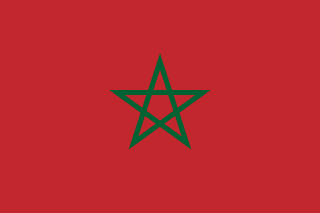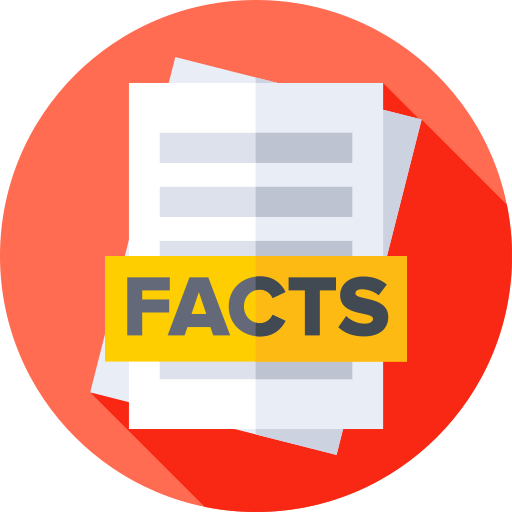Morocco - Geography

Here, let us take a look at the Geography of Morocco. Strategic location along Strait of Gibraltar; the only African nation to have both Atlantic and Mediterranean coastlines; the waters off the Atlantic coast are particularly rich fishing areas. Mother's mean age at first birth is (), whereas, the Maternal mortality ratio is 72 deaths/100,000 live births (2020 est.)
Geographical data of Morocco
| Location | Northern Africa, bordering the North Atlantic Ocean and the Mediterranean Sea, between Algeria and Mauritania |
|---|---|
| Geographic coordinates | 28 30 N, 10 00 W |
| Map references | Africa |
| Tarrain | mountainous northern coast (Rif Mountains) and interior (Atlas Mountains) bordered by large plateaus with intermontane valleys, and fertile coastal plains; the south is mostly low, flat desert with large areas of rocky or sandy surfaces |
| Natural Resources | phosphates, iron ore, manganese, lead, zinc, fish, salt |
| Natural Hazards | in the north, the mountains are geologically unstable and subject to earthquakes; periodic droughts; windstorms; flash floods; landslides; in the south, a hot, dry, dust/sand-laden sirocco wind can occur during winter and spring; widespread harmattan haze exists 60% of time, often severely restricting visibility |
| Irrigated Land | 17,645 sq km (2019) |
| Major rivers (by length in km) | Draa - 1,100 km |
| Major aquifers | |
| Land Boundaries | 3,523.5 km |
| Border Countries | Algeria 1,941 km; Mauritania 1,564 km; Spain (Ceuta) 8 km and Spain (Melilla) 10.5 km |
| Coastline | 2,945 km |
| Climate | Mediterranean in the north, becoming more extreme in the interior; in the south, hot, dry desert; rain is rare; cold offshore air currents produce fog and heavy dew |
| Area | |
| Total Area | |
| Land Area | 716,300 sq km |
| Water Area | 250 sq km |
| comparative Area | slightly larger than twice the size of California |
| Maritime Claims | |
| Territorial sea | 12 nm |
| Contiguous zone | 24 nm |
| Exclusive economic zone | 200 nm |
| Continental shelf | 200-m depth or to the depth of exploitation |
| Elevations | |
| Highest point | Jebel Toubkal 4,165 m |
| Lowest point | Sebkha Tah -59 m |
| Mean elevation | 909 m |
| Land Use | |
| Agricultural land | 67.9% (2022 est.) |
| Agricultural land: arable land | arable land: 16.8% (2022 est.) |
| Agricultural land: permanent crops | permanent crops: 4% (2022 est.) |
| Agricultural land: permanent pasture | permanent pasture: 47.1% (2022 est.) |
| Forest | 12.9% (2022 est.) |
| Other | 19.2% (2022 est.) |
Population Distribution
The highest population density is found along the Atlantic and Mediterranean coasts; a number of densely populated agglomerations are found scattered through the Atlas Mountains as shown in this population distribution map
People and Society
In Morocco, the different Ethnic groups are such that we have: Arab-Amazigh 99%, other 1%
| Population | |
|---|---|
| Pop growth rate | 0.84% (2024 est.) |
| Birth rate | 16.8 births/1,000 population (2024 est.) |
| Death rate | 6.6 deaths/1,000 population (2024 est.) |
| Health expenditure | 5.7% of GDP (2021) |
| Physicians Density | |
| Hospital bed Density | 1 beds/1,000 population (2017) |
| Total fertility rate | 2.25 children born/woman (2024 est.) |
| Gross reproduction rate | 1.1 (2024 est.) |
| Contraceptive prevalence rate | 70.8% (2018) |
| Est married women (ages 15-49) | 58.8% (2023 est.) |
| Literacy | age 15 and over can read and write |
| Education expenditures | 6.8% of GDP (2020) |
| Net Migration rate | -1.7 migrant(s)/1,000 population (2024 est.) |
| Nationality | Moroccan | Moroccan(s) |
| Languages | |
| Religions | Muslim 99% (official; virtually all Sunni, <0.1% Shia), other 1% (includes Christian, Jewish, and Baha'i); note - Jewish about 3,000-3,500 (2020 est.) |
| Age Structure | |
| 0-14 years | 25.7% (male 4,898,154/female 4,701,786) |
| 15-64 years | 65.9% (male 12,236,752/female 12,410,567) |
| 65 years and over | 8.4% (2024 est.) (male 1,529,357/female 1,610,969) |
| Dependency Ratios | |
| Total dependency ratio | 52.2 |
| Youth dependency ratio | 40.9 |
| Elderly dependency ratio | 11.3 |
| Potential support ratio | 8.9 (2021 est.) |
| Median Age | |
| Total | 30.6 years (2024 est.) |
| Male | 30.1 years |
| Female | 31 years |
| Urbanization | |
| Urban population | 65.1% of total population (2023) |
| Rate of urbanization | 1.88% annual rate of change (2020-25 est.) |
| Major urban areas (Pop) | 3.893 million Casablanca, 1.959 million RABAT (capital), 1.290 million Fes, 1.314 million Tangier, 1.050 million Marrakech, 979,000 Agadir (2023). |
| Sex Ratio | |
| At birth | 1.05 male(s)/female |
| 0-14 years | 1.04 male(s)/female |
| 15-64 years | 0.99 male(s)/female |
| 65 years and over | 0.95 male(s)/female |
| Total population | 1 male(s)/female (2024 est.) |
| Infant Motality | |
| Total | 18.3 deaths/1,000 live births (2024 est.) |
| Male | 20.4 deaths/1,000 live births |
| Female | 16 deaths/1,000 live births |
| Life Expectancy at birth | |
| Total population | 74.2 years (2024 est.) |
| Male | 72.5 years |
| Female | 76 years |
| Drinking Water Sources | |
| Improved: urban | urban: 98.3% of population |
| Improved: rural | rural: 79.1% of population |
| Improved: total | total: 91% of population |
| Unimproved: urban | urban: 1.7% of population |
| Unimproved: rural | rural: 20.9% of population |
| Unimproved: total | total: 9% of population (2017 est.) |
| Sanitation facility acess | |
| Improved: urban | urban: 98.2% of population |
| Improved: rural | rural: 72.4% of population |
| Improved: total | total: 88.8% of population |
| Unimproved: urban | urban: 1.8% of population |
| Unimproved: rural | rural: 27.6% of population |
| Unimproved: total | total: 11.2% of population (2020 est.) |
| Alcohol consumption per capita | |
| Total | 0.51 liters of pure alcohol (2019 est.) |
| Beer | 0.18 liters of pure alcohol (2019 est.) |
| Wine | 0.24 liters of pure alcohol (2019 est.) |
| Spirits | 0.09 liters of pure alcohol (2019 est.) |
| Other alcohols | 0 liters of pure alcohol (2019 est.) |
| Tobacco use | |
| Total | 14.5% (2020 est.) |
| Male | 28.2% (2020 est.) |
| Female | 0.8% (2020 est.) |
| Child marriage | |
| Women married by age 15 | 0.5% |
| Women married by age 18 | 13.7% (2018 est.) |
Demographic profile
All Important Facts about Morocco
Want to know more about Morocco? Check all different factbooks for Morocco below.









